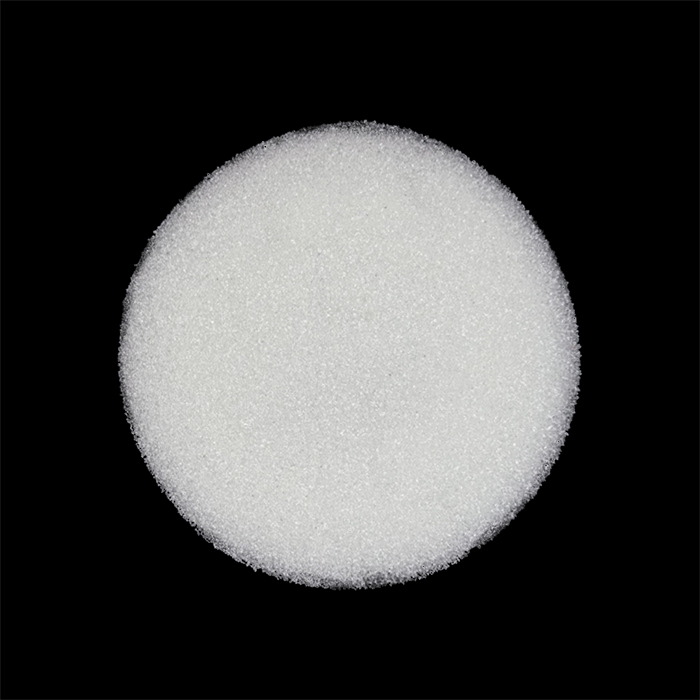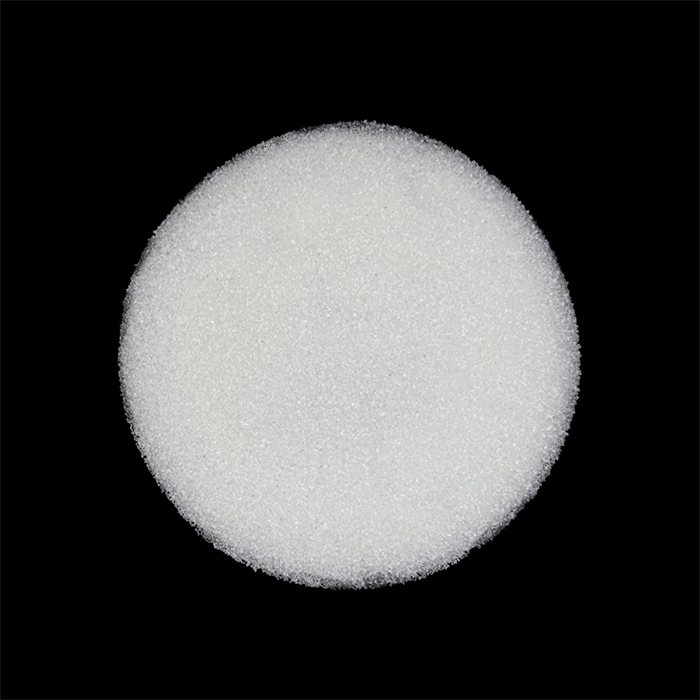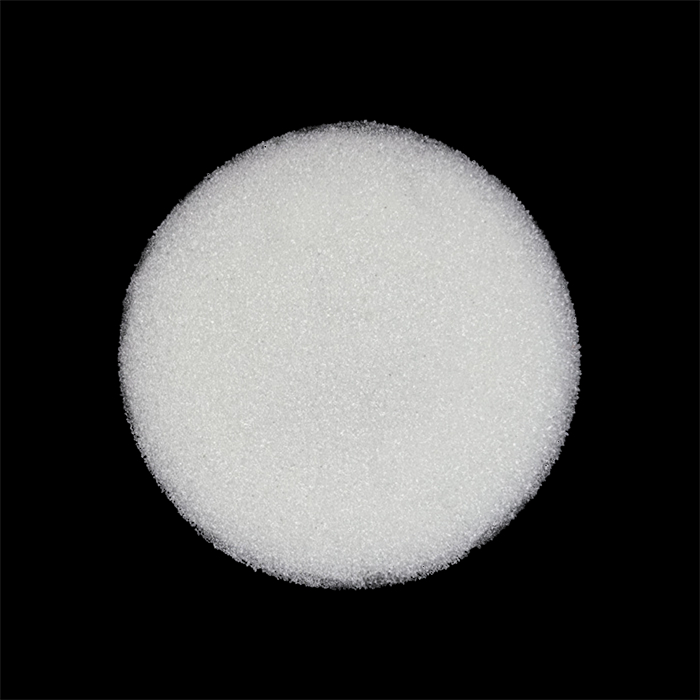Perlas de vidrio termoplásticas para señalización vial son componentes esenciales en seguridad vial, proporcionando retrorreflectividad a la señalización de carreteras, pasos de peatones y pistas de aeropuertos. Estas perlas se añaden a pintura termoplástica mejorar la visibilidad nocturna al reflejar los faros de los vehículos, haciendo que las carreteras sean más seguras para conductores y peatones.
La demanda de perlas de vidrio termoplástico de alta calidad está creciendo como gobiernos de todo el mundo invertir en infraestructuras viarias inteligentes y mejoras de la seguridad vial. En esta guía, exploraremos todo lo que necesita saber sobre microesferas de vidrio termoplásticas para señalización vial, incluyendo especificaciones técnicas, aplicaciones, tendencias de precios, perspectivas de mercado y principales proveedores para 2025.
¿Qué son las microesferas de vidrio termoplásticas para señalización vial?
Las microesferas de vidrio termoplásticas para señalización vial son partículas de vidrio microscópicas y esféricas integrado en pintura termoplástica para carreteras para mejorar visibilidad y durabilidad. Cuando los faros de los vehículos inciden sobre las perlas, éstas reflejan la luz hacia el conductormejorando la seguridad vial, especialmente de noche o en condiciones de poca luz.
Características principales de las perlas de vidrio termoplástico:
✔ Alto índice de refracción (RI) para una máxima reflectividad
✔ Duraderas y resistentes a la intemperie para una señalización vial duradera
✔ Se utiliza en autopistas, pasos de peatones y pistas de aeropuertos
✔ Mejora la visibilidad nocturna y reduce los accidentes
✔ Cumple las normas internacionales de seguridad vial
Las perlas de vidrio termoplástico desempeñan un papel crucial en la gestión del tráficopara que las marcas viales sigan siendo muy visibles incluso en condiciones meteorológicas adversas.
Mejores proveedores y fabricantes de microesferas de vidrio termoplásticas para señalización vial
Selección de un proveedor fiable es esencial para garantizar la calidad y rendimiento de las perlas de vidrio termoplástico. Uno de los principales fabricantes en esta industria es LangFang Lanxing Impex S.L..
¿Por qué elegir LangFang Lanxing para las perlas de vidrio termoplástico?
LangFang Lanxing Impex S.L. es un fabricante y proveedor líder de alto rendimiento microesferas de vidrio termoplásticas para señalización vial.
Principales ventajas de las perlas de vidrio termoplástico LangFang Lanxing:
- Alta reflectividad: Disponible en RI 1,5, RI 1,7, RI 1,9 y RI 2,2+ para mejorar el brillo.
- Calidad certificada: Cumple Normas EN1423, AASHTO M247, BS6088 y JIS R3301.
- Opciones personalizables: Ofertas varios tamaños de microesferas, revestimientos y soluciones de envasado.
- Experiencia mundial en exportación: Suministros América del Norte, Europa, Asia y Oriente Medio.
- Precios competitivos: Precios directos de fábrica para pedidos al por mayor y proyectos personalizados.
Para aplicaciones de seguridad vial de alto rendimiento, Perlas de vidrio termoplástico de LangFang Lanxing oferta durabilidad, reflectividad y rentabilidad excepcionales.
Especificaciones técnicas de las microesferas de vidrio termoplásticas para señalización vial
Elegir el perlas de vidrio termoplástico derecho depende de factores como índice de refracción, tamaño de la perla y tipo de revestimiento.
Especificaciones técnicas clave de las perlas de vidrio termoplástico
| Especificación | Detalles |
|---|---|
| Composición del material | Vidrio de gran pureza |
| Gama de tamaños de partículas | 100-850 micras (varía según la aplicación) |
| Índice de refracción (RI) | 1,5, 1,7, 1,9 o 2,2+. |
| Redondez | ≥ 85% (para alta reflectividad) |
| Opciones de revestimiento | Adhesivo, silicona, doble revestimiento |
| Densidad | 2,4 – 2,6 g/cm³ |
| Dureza (escala de Mohs) | 5-7 |
| Método de aplicación | Drop-on o Intermix |
| Durabilidad | Gran resistencia al desgaste |
| Contenido de humedad | ≤ 0.1% |
| Normas de cumplimiento | EN1423, AASHTO M247, BS6088, JIS R3301 |
Comprender los parámetros clave:
✔ Índice de refracción (IR): Los valores más altos de RI proporcionan mejor reflectividad (RI 1.9+ es ideal para autopistas y aeropuertos).
✔ Tipo de revestimiento: Los revestimientos adhesivos mejoran la adherencia, mientras que los revestimientos de silicona aumentan la resistencia al agua..
✔ Tamaño de las partículas: Las microesferas más grandes (600-850 micras) ofrecen una reflectividad superior en aplicaciones termoplásticas.
Utilizando perlas de vidrio termoplástico certificadas garantiza máxima visibilidad, adherencia y durabilidad en las marcas viales.



Aplicaciones de las microesferas de vidrio termoplásticas para señalización vial
Las perlas de vidrio termoplástico se utilizan en diversas aplicaciones industriales y de seguridad vialgarantizando mayor visibilidad y durabilidad.
1. Autopistas y autovías
- Tipo de aplicación: Perlas de vidrio gota a gota y entremezcladas para la señalización de carriles.
- Rendimiento: Proporciona retrorreflectividad instantánea para la conducción nocturna.
- Cuentas recomendadas: Perlas RI 1.7+ de gran visibilidad.
2. Pasos de peatones y vías urbanas
- Tipo de aplicación: Incrustado en revestimientos termoplásticos.
- Rendimiento: Mejora visibilidad para peatones y ciclistas.
- Cuentas recomendadas: Perlas recubiertas de silicona para una mayor resistencia al agua.
3. Pistas de despegue y aterrizaje
- Tipo de aplicación: Marcas de pista de alta intensidad.
- Rendimiento: Garantiza máxima visibilidad para los pilotos durante el despegue y el aterrizaje.
- Cuentas recomendadas: Perlas RI 2.2+ para un brillo ultraluminoso.
4. Señales de tráfico reflectantes y revestimientos industriales
- Tipo de aplicación: Utilizado en pinturas reflectantes, señales de tráfico y superficies antideslizantes.
- Rendimiento: Garantiza mejor visibilidad de las señales de tráfico y las marcas de seguridad.
- Cuentas recomendadas: Perlas de vidrio RI 1.5 estándar para aplicaciones rentables.
Perlas de vidrio termoplástico significativamente aumentar la visibilidad nocturna, haciendo más seguras las carreteras y las señales de tráfico.
Tendencias de precios y perspectivas de mercado de las microesferas de vidrio termoplásticas para señalización vial (2025)
En coste de las perlas de vidrio termoplástico depende de precios de las materias primas, eficacia de la producción y demanda mundial.
Tendencias actuales de los precios (2025)
| Índice de refracción | Precio medio por tonelada (USD) | Demanda del mercado |
|---|---|---|
| RI 1,5 | 400-400 - 400-700 | Alta |
| RI 1,7 | 600-600 - 600-900 | Crecer |
| RI 1,9 | 750-750 - 750-1,100 | Ampliar |
| RI 2.2+ | 1,200-1,200 - 1,200-1,800 | Aumentar |
Tendencias del mercado que impulsan el crecimiento
✔ Carretera inteligente y tecnologías de conducción autónoma - Aumento de la demanda de materiales reflectantes de alto rendimiento.
✔ Proyectos de infraestructuras sostenibles - Los gobiernos invierten en soluciones ecológicas de señalización vial.
✔ Creciente demanda de perlas RI 1.9+ - Utilizado en autopistas, aeropuertos y carreteras de alta velocidad.
En mercado de perlas de vidrio termoplástico se espera que crecerá significativamente de aquí a 2030impulsado por avances tecnológicos y aumento de las iniciativas de seguridad vial.
Certificación y normas para microesferas de vidrio termoplásticas para señalización vial
Al comprar microesferas de vidrio termoplásticas para señalización vialGarantizar el cumplimiento de normas internacionales de calidad y seguridad vial es esencial. Estas certificaciones garantizan que las cuentas cumplen reflectividad, durabilidad y adherencia requisitos para las marcas viales en todo el mundo.
Principales normas internacionales para perlas de vidrio termoplástico
| Estándar | Región | Descripción |
|---|---|---|
| EN1423 / EN1424 | Europa | Especifica los requisitos de rendimiento y calidad de las perlas de vidrio reflectantes utilizadas en las marcas viales. |
| AASHTO M247 | EE.UU. | Define la clasificación y las prestaciones de reflectividad de las microesferas de vidrio utilizadas en la pintura para el tráfico por carretera. |
| BS6088 | REINO UNIDO | Cubre los requisitos de clasificación y aplicación de microesferas de vidrio en pinturas de señalización vial y termoplásticos. |
| JIS R3301 | Japón | Regula la calidad, la distribución del tamaño y las propiedades de adherencia de las microesferas de vidrio para aplicaciones de seguridad vial. |
| ASTM D1155 | Global | Método de ensayo normalizado para determinar la granulometría y la gradación de las perlas de vidrio. |
| ISO 9001:2015 | Global | Garantiza que los fabricantes sigan un sistema de gestión de la calidad para una calidad constante del producto. |
¿Por qué son importantes las certificaciones?
✔ Garantiza el cumplimiento - Cumple la normativa gubernamental sobre visibilidad y durabilidad de las marcas viales.
✔ Garantiza un alto rendimiento - Evita desgaste prematuro y garantiza la retrorreflectividad a largo plazo.
✔ Facilita el comercio mundial - Las cuentas de vidrio certificadas son más fácil de importar y exportar.
✔ Mejora la seguridad vial - Garantiza la visibilidad de las marcas en cualquier condición meteorológica.
Al abastecerse microesferas de vidrio termoplásticas para señalización vialverifique siempre que cumplen Certificaciones AASHTO, EN, BS6088 o JIS para garantizar reflectividad duradera y de alta calidad.
Guía de compra a granel: ¿Cómo importar microesferas de vidrio termoplásticas para señalización vial?
Si tiene previsto importación de microesferas de vidrio termoplásticas para señalización vial a granel, tras una proceso de contratación estructurado garantiza una suave y rentable transacción.
Paso 1: Defina sus requisitos
- Determinar el índice de refracción (RI 1,5, RI 1,7, RI 1,9, RI 2,2+) basado en su necesidades de aplicación.
- Elija el tamaño del cordón, tipo de revestimiento (adhesivo, silicona, doble revestimiento) y propiedades de durabilidad.
- Considere opciones de pedido al por mayor para reducir costes.
Paso 2: Elegir un proveedor fiable
✔ LangFang Lanxing Impex S.L. es un fabricante líder que ofrece perlas de vidrio termoplástico de alta calidad para señalización vial.
✔ Asegurarse de que el proveedor cumple Normas ISO, EN, AASHTO y BS6088.
✔ Solicitud muestras para verificar el rendimiento del producto antes de comprarlo.
Paso 3: Solicitar un presupuesto y negociar las condiciones
- Proporcione especificaciones detalladas para recibir un presupuesto exacto.
- Discuta precios al por mayor, condiciones de pago y plazos de entrega.
- Infórmese sobre revestimientos personalizados u opciones de envasado.
Paso 4: Confirmar el pedido y organizar el envío
- Elija el más método de envío rentable (FOB, CIF, DDP).
- Asegúrese embalaje adecuado para evitar daños durante el transporte.
- Organizar despacho de aduanas y documentación de importación.
Paso 5: Recibir e inspeccionar la mercancía
- En el momento de la entrega, compruebe envasado, etiquetado y cantidad.
- Realice pruebas de control de calidad para garantizar que las cuentas cumplan normas de adherencia, reflectividad y durabilidad.
Si sigue estos pasos, podrá importar con éxito perlas de vidrio termoplástico con mínimo riesgo y máxima rentabilidad.
Innovaciones en microesferas de vidrio termoplásticas para señalización vial: Soluciones sostenibles y de alta tecnología
Con un énfasis cada vez mayor en sostenibilidad y tecnologías viales inteligentesLos fabricantes están desarrollando perlas de vidrio termoplástico ecológicas que reducen el impacto ambiental manteniendo alta reflectividad y durabilidad.
1. Tecnología del vidrio reciclado
✔ La mayoría modernas balizas termoplásticas de señalización vial están hechos de 100% vidrio recicladoreducir los residuos y conservar los recursos naturales.
✔ LangFang Lanxing se especializa en perlas de vidrio reciclado de gran pureza para aplicaciones de seguridad vial.
2. Fabricación con bajas emisiones
✔ Los procesos de producción energéticamente eficientes reducen emisiones de carbono.
✔ Fábricas solares están surgiendo como alternativas sostenibles.
3. Recubrimientos avanzados para una mayor duración
✔ Revestimientos biodegradables sustituyen a los productos químicos nocivos, haciendo que las perlas sean más ecológico.
✔ Revestimientos de doble capa mejorar adherencia, resistencia al agua y durabilidad.
4. Perlas reflectantes inteligentes para sistemas de tráfico inteligentes
✔ Cuentas inteligentes con propiedades fotocrómicas adaptarse a condiciones meteorológicas y de iluminación.
✔ Recubrimientos autolimpiantes evitar la acumulación de suciedad, garantizando reflectividad duradera.
¿Por qué son importantes las perlas de vidrio termoplástico respetuosas con el medio ambiente?
✔ Infraestructuras viarias sostenibles - Reduce el impacto medioambiental.
✔ Menores costes de mantenimiento - Los revestimientos más duraderos requieren menos repintados.
✔ Cumple la normativa ecológica - Cumple normas de seguridad medioambiental.
Innovaciones ecológicas en microesferas de vidrio termoplásticas para señalización vial están dando forma a la futuro de la seguridad vial y soluciones de visibilidad.
Perspectivas del mercado mundial: Informe sobre la industria de las microesferas de vidrio termoplásticas para señalización vial 2025
En marcaje vial termoplástico industria del talón de vidrio está creciendo debido a aumento de las inversiones en seguridad vial, tecnologías viales inteligentes y proyectos de infraestructuras sostenibles.
Panorama del mercado mundial de microesferas de vidrio termoplásticas para señalización vial
| Región | Tasa de crecimiento (TCAC 2025-2030) | Principales factores de crecimiento |
|---|---|---|
| Norteamérica | 5.2% | Tecnologías viales inteligentes y normas de seguridad estrictas |
| Europa | 4.8% | Demanda de materiales reflectantes de alto rendimiento |
| Asia-Pacífico | 6.5% | Expansión de las infraestructuras y urbanización |
| Oriente Medio | 5.0% | Inversiones en seguridad vial y autopistas inteligentes |
Tendencias del mercado que impulsan el crecimiento
✔ Carretera inteligente y tecnologías de conducción autónoma - Aumento de la demanda de materiales reflectantes de alto rendimiento.
✔ Proyectos de infraestructuras sostenibles - Los gobiernos invierten en soluciones ecológicas de señalización vial.
✔ Creciente demanda de perlas RI 1.9+ - Utilizado en autopistas, aeropuertos y carreteras de alta velocidad.
En mercado de perlas de vidrio termoplástico se espera que crecerá significativamente de aquí a 2030impulsado por avances tecnológicos e iniciativas globales de seguridad.
FAQ: Todo lo que necesita saber sobre las microesferas de vidrio termoplásticas para señalización vial
| Pregunta | Respuesta |
|---|---|
| ¿Para qué se utilizan las microesferas de vidrio termoplásticas de señalización vial? | Mejoran adherencia, durabilidad y reflectividad en marcas viales, pasos de peatones, autopistas y pistas de aeropuertos. |
| ¿Cuál es el mejor índice de refracción para las perlas de vidrio termoplástico? | RI 1,5 para aplicaciones rentables, RI 1,7+ para autopistas, RI 1,9+ para aeropuertos. |
| ¿Cuánto cuestan las perlas de vidrio termoplástico? | Los precios oscilan entre 400 a 400 a 1.800 por toneladaen función de tipo y calidad del revestimiento. |
| ¿Quién es el mejor proveedor de perlas de vidrio termoplástico? | LangFang Lanxing Impex S.L. es un fabricante líder suministrar a todo el mundo. |
| ¿Pueden personalizarse las perlas de vidrio termoplástico? | Sí, los fabricantes ofrecen revestimientos, tamaños y envases personalizados. |
| ¿Existen perlas de vidrio termoplástico ecológicas? | Sí, la mayoría de las cuentas modernas están hechas de 100% vidrio reciclado. |
Conclusión
Las microesferas de vidrio termoplásticas para señalización vial son esencial para la seguridad vialgarantizando adhesión, durabilidad y visibilidad superiores en carreteras, aeropuertos y revestimientos industriales. Elegir cuentas de vidrio certificadas de alta calidad de proveedores de confianza como LangFang Lanxing garantiza rendimiento excepcional y ahorro de costes.
Para pedidos al por mayor, especificaciones personalizadas o recomendaciones de expertos, LangFang Lanxing Impex S.L. es tu la mejor opción para las microesferas de vidrio termoplásticas de señalización vial en 2025 y más adelante.




